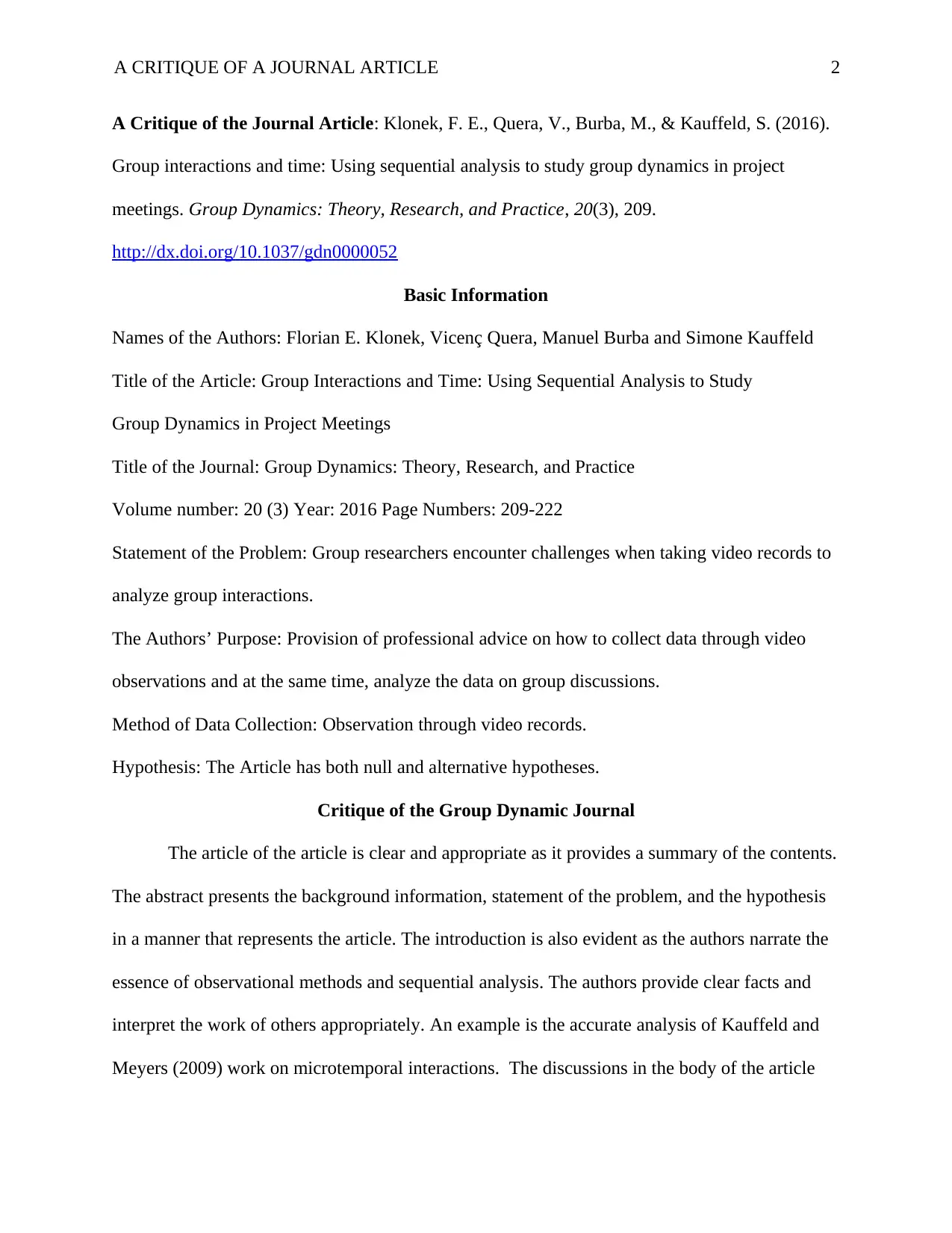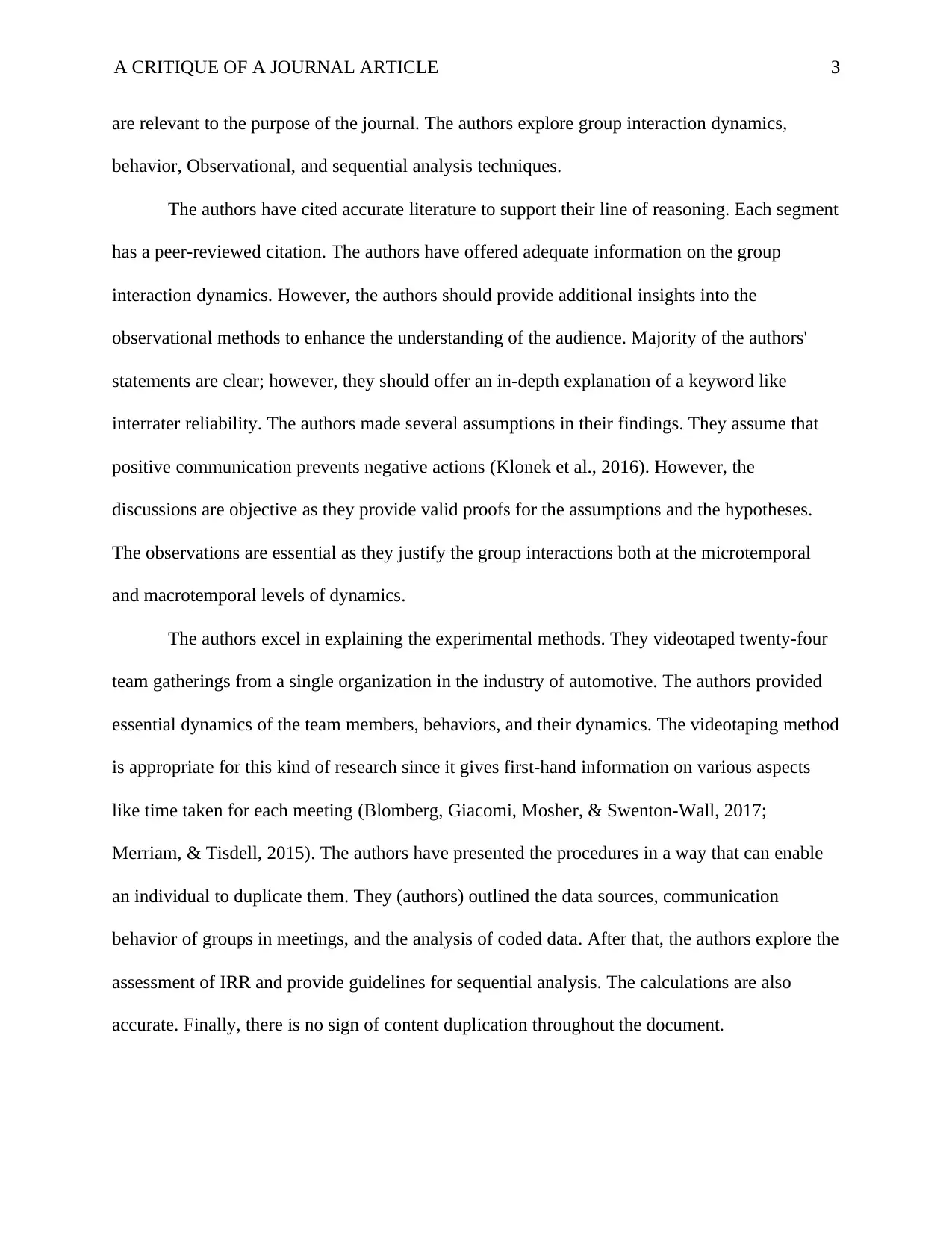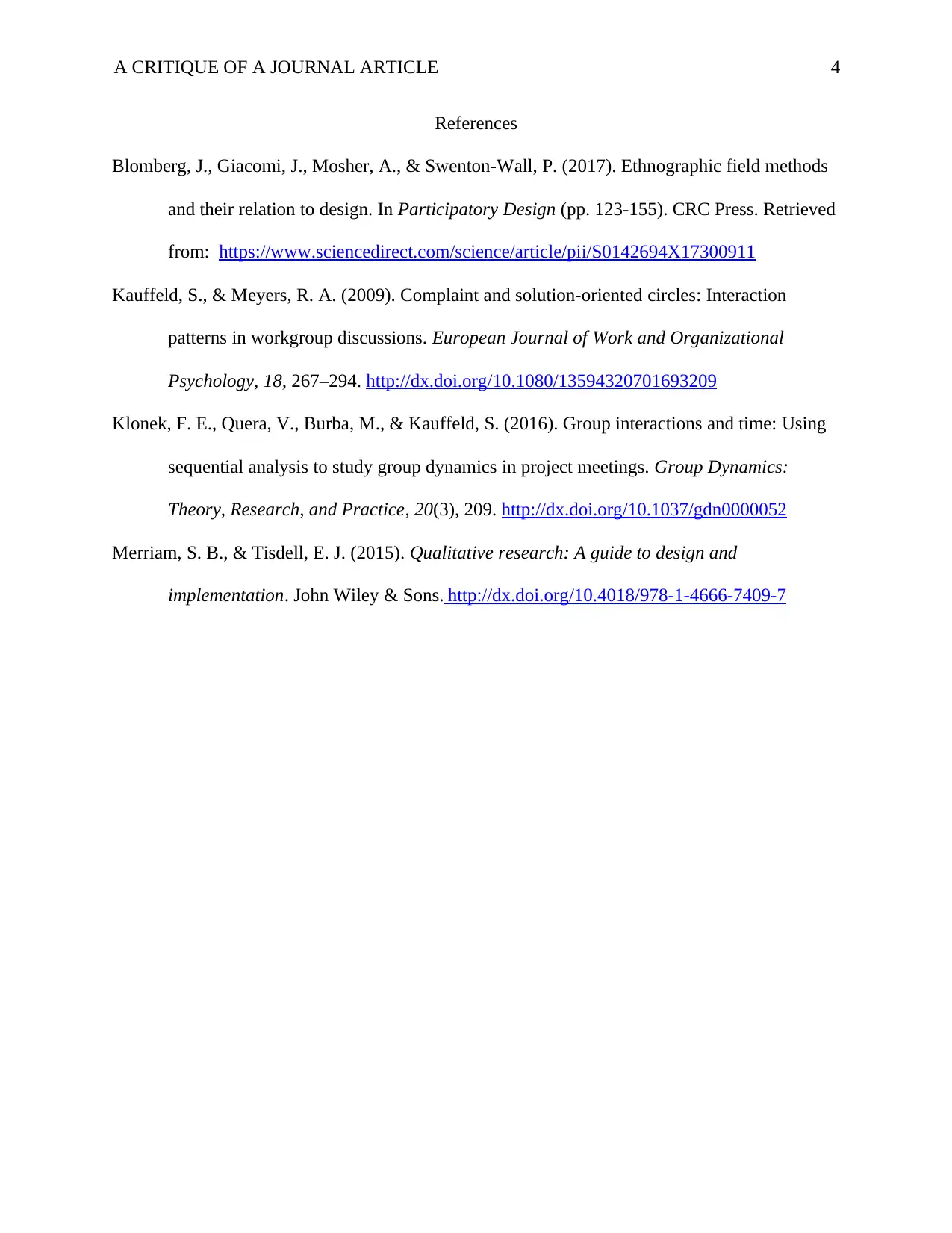A Critique of a Journal Article: Psychology Module Assignment
VerifiedAdded on 2021/09/15
|4
|834
|104
Report
AI Summary
This report is a critique of the journal article "Group Interactions and Time: Using Sequential Analysis to Study Group Dynamics in Project Meetings" by Klonek et al. (2016). The critique begins with basic information about the article, including authors, title, and publication details, followed by a concise statement of the problem and the authors' purpose. The methodology, involving observation through video records, and the presence of both null and alternative hypotheses are noted. The critique evaluates the article's clarity, organization, and the relevance of its content to the research question, highlighting strengths like clear presentation of information and appropriate literature citations. It also provides suggestions for improvement, such as providing more in-depth explanations of certain concepts. The critique also discusses the authors' assumptions, experimental methods, and the appropriateness of the data collection method. It concludes by noting the accuracy of the calculations and the absence of content duplication, emphasizing the article's contributions to the study of group dynamics and research methodology.
1 out of 4





![[object Object]](/_next/static/media/star-bottom.7253800d.svg)